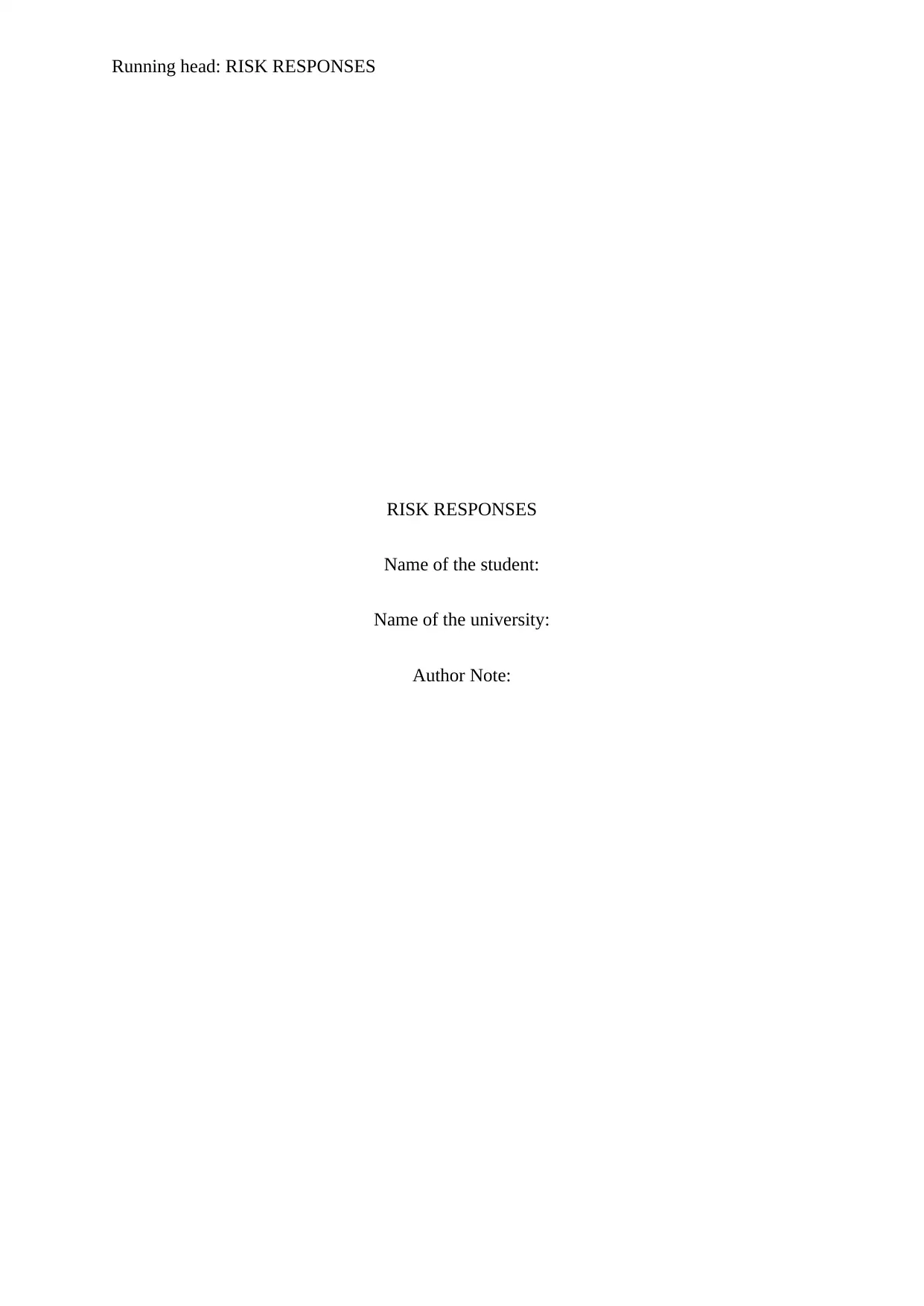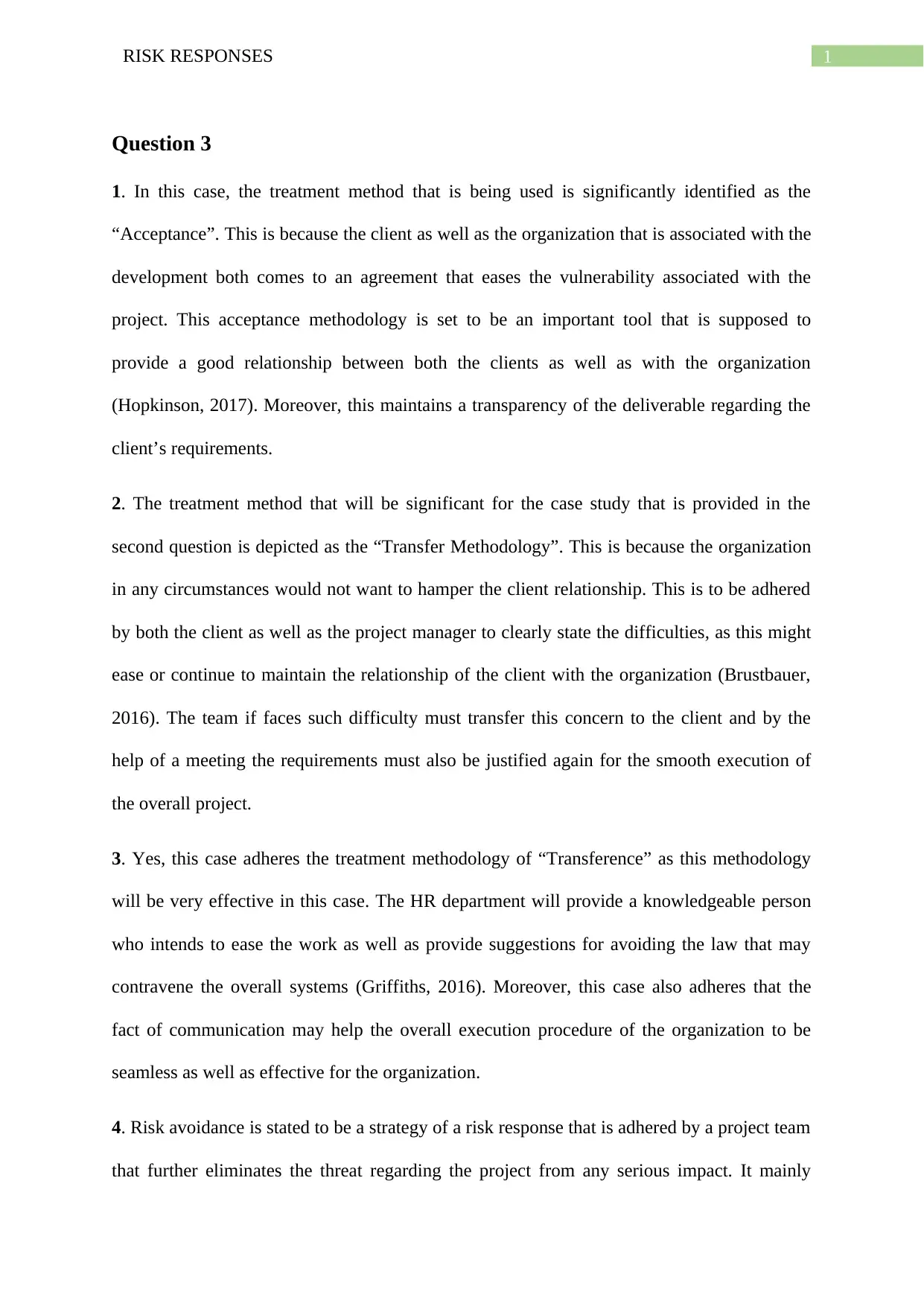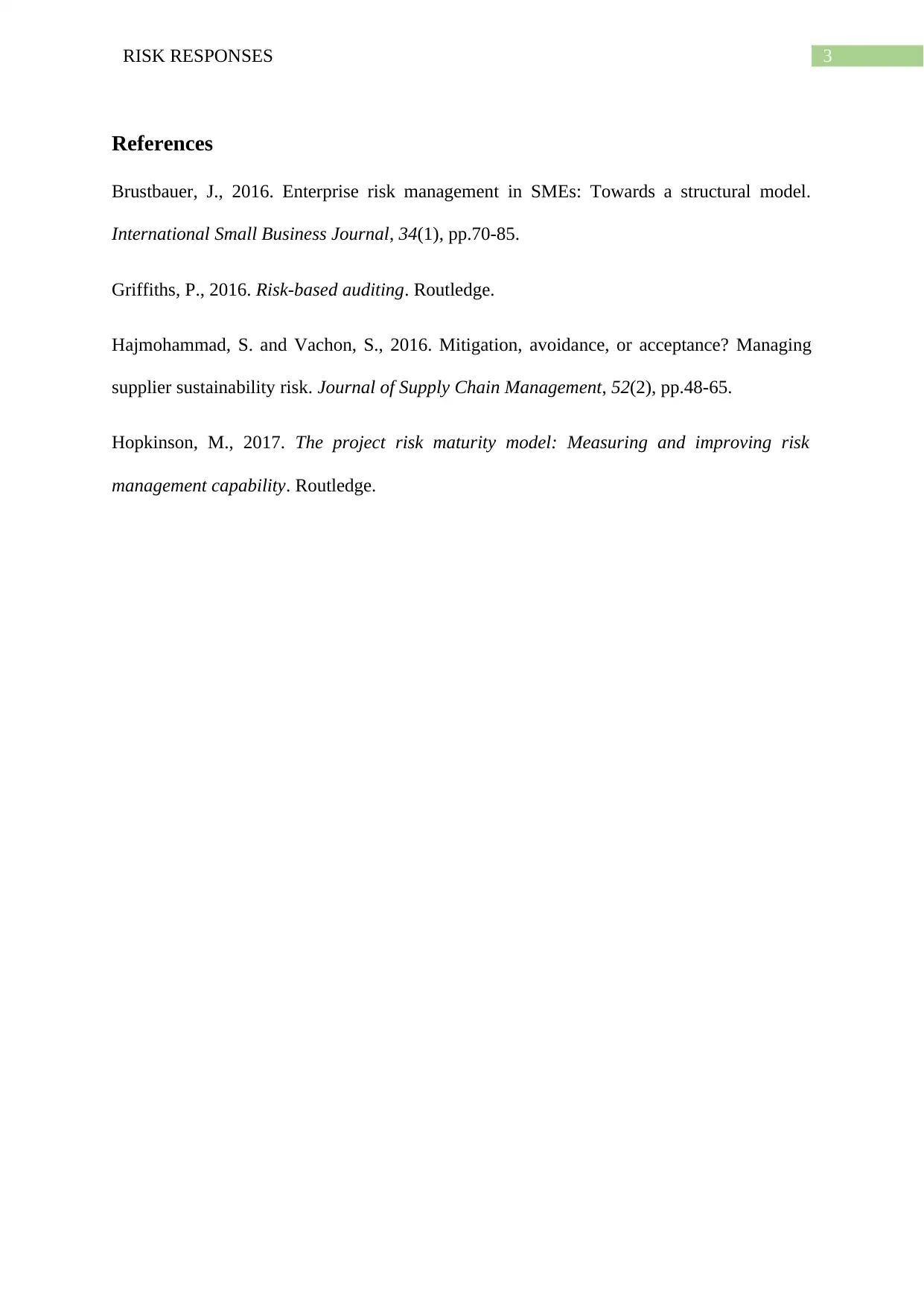Leadership Module: Risk Responses Homework Assignment Analysis
VerifiedAdded on 2022/12/12
|4
|577
|8
Homework Assignment
AI Summary
This homework assignment analyzes various risk response strategies within project management scenarios. The student identifies and explains the application of acceptance and transfer methodologies in specific cases, emphasizing the importance of client relationships and communication. The assignment also addresses risk avoidance and contrasts it with risk acceptance, highlighting how organizations manage project threats and potential impacts. The student references relevant literature to support the analysis and demonstrates an understanding of risk management principles, including the role of HR departments and legal considerations. The assignment showcases the practical application of risk management concepts to real-world scenarios, providing insights into effective strategies for mitigating project risks. The student provides clear explanations of the different methodologies, and justifies the selection of each strategy based on the scenario provided.
1 out of 4








![[object Object]](/_next/static/media/star-bottom.7253800d.svg)